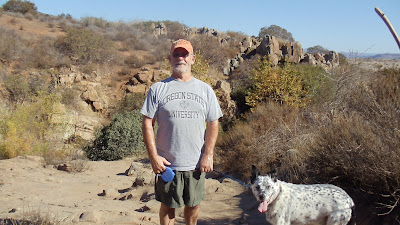Yuma is in the desert, but also at the confluence of the Colorado and Gila Rivers. In 1935 the Imperial Dam was completed, giving local access to water for all the irrigated cropland we see: trenches of water between rows of crops plus sprinkler irrigation. (We met some folks who told us all the irrigation makes Yuma humid, but I haven’t noticed that.) The dam also created Martinez Lake.
Tuesday and Wednesday we visited some of the places created/supported by the dam and the rivers -- if you don't count the entire city of Yuma.
1) Martinez Lake Resort is a private marina/town on the lake of the same name. It was started in 1955 as a fishing camp and named for a family who grazed cattle there before the dam created the lake. I can only describe the marina as funky looking with hacienda-type homes next to shacks. Jim said he thought their only zoning regulation was “If you can toss it up, you can live in it.” Great place if you love to fish, boat, bird watch or are in the witness protection program.
2) Close to the resort is a military campground on Martinez Lake. It was less junky looking than the town and had small cabins plus 20 RV spots with electricity and water hook ups, but no gray/blackwater hook ups or dump site--which might limit how long you could stay. For us, that would be one week max. It's really out in the boonies, but I could maybe see us staying there for a few days next year.
3) Also near the resort is the beautiful and desolate Imperial National Wildlife Refuge made up of desert, wetlands and the last unchannelized stretch of the Colorado River -- plus what looks like untouched land.
4) Yesterday we took a 3 1/2 mile hike along the Yuma East Wetlands trail near downtown Yuma. The trail is in a 350 acres area being restored to wetlands by the Quechan Indian Tribe and the City of Yuma.
 |
| The Martinez Lake welcome center, I guess. |
 |
| Main Street into Martinez Lake... |
 | ||||
And another home near the beginning of Martinez Lake
|















































